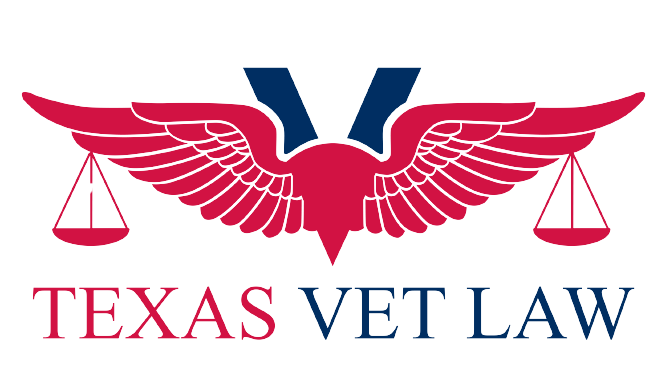Disability Ratings
Maximizing Disability Ratings
Understanding how to maximize your disability rating is crucial. At Texas Vet Law, we’re dedicated to helping you achieve the highest possible rating to secure the benefits you deserve.
Introduction to Disability Ratings
We’ll explain the VA disability rating system, which plays a pivotal role in determining the level of benefits you’ll receive. Knowing how this system works is essential for veterans seeking compensation.
Understanding the VA Disability Rating System
Dive deep into the intricacies of the VA disability rating system. We’ll demystify the process and help you comprehend how your condition is assessed. Current VA Disability Compensation rates can be found here.
Strategies to Achieve the Highest Disability Ratings
We’ll share strategies and tactics to maximize your disability rating. Our team’s expertise in this area ensures you’ll receive the highest possible compensation. Here are a few ways that you can increase your VA Disability rating:
- Seek treatment and gather medical evidence to support your claim.
- Document all disabilities and their impact on daily life.
- Apply for secondary service connection for conditions related to existing disabilities.
- Request a reevaluation of your current rating.
- File a Notice of Disagreement (NOD) if you disagree with the VA’s decision.
- Apply for Individual Unemployability (IU) if unable to work due to service-connected disabilities.
- Submit a claim for Special Monthly Compensation (SMC) for severe disabilities.
- Appeal to the Board of Veterans Appeals (BVA) if you disagree with the Regional Office decision.
- Hire our firm, which is led by a VA-accredited attorney for claims assistance.
- Consider an increased rating claim for worsening service-connected disabilities.
- Obtain a supporting medical opinion from a private physician.
- Seek help from Austin Law, a VA-Accredited Firm for filing or appealing a claim.
- Provide evidence for service connection of new or previously denied conditions.
- Submit a Fully Developed Claim (FDC) if all required evidence is available.
- Request a Decision Review Officer (DRO) review if you disagree with the Regional Office decision.
- Appeal to the U.S. Court of Appeals for Veterans Claims (CAVC) if you disagree with the BVA decision.
- Apply for presumptive conditions related to Agent Orange or other toxic exposures.
- Apply for VA pension if you have limited income and assets.
- Request a hearing before the BVA or the Regional Office to present new evidence and arguments.
The Role of VA Examinations in Rating Determinations
VA examinations are a critical part of the rating process. We’ll help you prepare for these examinations, ensuring your condition is accurately assessed. More information about VA Claims exams, can be found here.
How We Work to Maximize Your Disability RATING
Discover how Texas Vet Law works tirelessly to secure the best possible disability rating for our clients. We’ll outline our approach to success in this crucial aspect of VA claims.
If you’re a disabled veteran, securing the financial support you need is crucial when facing challenges that prevent you from working or caring for yourself. Texas Vet Law is here to provide benefits for injuries and medical conditions related to your time in the service, ensuring you receive the compensation you deserve.
- VA Disability Ratings: Unveiling the Process
- Texas Vet Law utilizes VA Disability Ratings, assigning a percentage based on a Compensation and Pension (C&P) examination. This evaluation considers factors such as C&P examination results, federal agency information, medical evidence, lay statements, and other pertinent details to determine the severity of your service-connected condition.
- Decoding Your Benefits: Understanding Texas Vet Law Disability Ratings
- To receive disability benefits, veterans must meet specific requirements, and the assigned percentage determines the maximum compensation. The Texas Vet Law Rating Board plays a crucial role in deciding eligibility and ratings, linking them to monthly payments.
- How Texas Vet Law Disability Ratings Are Determined
- Texas Vet Law reviews medical evidence, emphasizing the importance of up-to-date documentation for an accurate assessment. Factors such as C&P Exam Results and Functional Impairment play a role in determining your rating. For those with multiple disabilities, Texas Vet Law uses a formula to calculate an overall disability rating, capped at 100 percent.
- Common Disabilities and Their Ratings
- Texas Vet Law assigns disability ratings for various conditions, including Tinnitus, PTSD, Lumbar and Cervical Spine Conditions, Migraines, and Scarring. These ratings range from 0 to 100 percent, reflecting the severity of the condition and its impact on daily life.
- Compensation Rates for Different Texas Vet Law Disability Ratings
- Compensation rates vary based on your disability rating, marital status, number of children, and dependent parents. Texas Vet Law considers cost-of-living adjustments to ensure your purchasing power remains stable.
- Seeking a Higher Rating: Your Options
- If you believe your Texas Vet Law Disability Rating is incorrect, you can request a re-evaluation. Options include filing an appeal, claiming an increased rating, requesting TDIU (Total Disability Rating based on Individual Unemployability), or filing for secondary service-connected disabilities.
- Your Ratings Over Time: Understanding Changes
- Most Texas Vet Law Disability Ratings are not permanent, and conditions may be re-evaluated based on changes over time. Veterans can request increases, but it’s essential to navigate the process carefully to avoid potential reductions in benefits.
